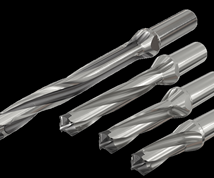Steel Choice Matters for Corrosion Resistance
A free-machining stainless steel faces the extremely corrosive injection molding environment head on, improving machinability and stability.
#Tips #toolsteel
Tool steel resists condensation, and waterline corrosion, which is especially important as the use of corrosive materials like fire-retardant additives, PVC and aminoplast increases. However, with every positive there is typically a negative. For example, corrosion-resistant plastic injection mold steels require additional machining time that increases wear, and more complex mold bases cause 60 percent of the steel to become chips.
To address these challenges, steel suppliers continue to develop specialty steels to combat the extremely corrosive injection molding environment while improving steel’s machinability and stability. For example, a free-machining stainless steel that offers a balance between machinability and corrosion resistance by combining a special chemical composition with a special heat-treatment process.
Featured Content
Low-carbon content and alloying elements such as chromium, manganese, and other additions play an important role in this free-machining stainless steel. The alloying elements are added during production and combine to yield optimal hardness, machinability and corrosion resistance (see Table 1).
| C | Si | Mn | S | Cr | Additions |
|---|---|---|---|---|---|
| 0.05 | 0.40 | 1.30 | 0.15 | 12.50 | + |
Table 1. Chemical composition in weight-%.
The heat treatment process further refines the steel at the final production process. The material is heated to a temperature of 1,475°F under controlled conditions and quenched in water or a polymer, which promotes the characteristic of a homogenous microstructure yielding material that is consistent throughout and extremely stable.
To assess corrosion resistance and determine the appropriate testing method, the mold builder must understand the type of corrosion that may occur. The corrosion behavior is a system property. The corresponding tests only reveal the classification of the steels in the same testing structure. Several tests were conducted on this free-machining stainless steel in laboratory conditions with media containing chloride, condensation and in slightly acidic conditions. A sulfur-alloyed steel was tested for comparison. The results indicated that the free-machining steel and the sulfur-alloyed steel are nearly identical in corrosion resistance. The free-machining steel also offers an increase in cost-effectiveness and productivity by decreasing machining cost and lead times (see Figure 1).

Figure 1. Comparing machinability in % (sulfur-alloyed steel 325 HB, free-machining stainless steel 370 HB).
To optimize machining efficiencies and lead times, refer to the process recommendations in Table 2.

Table 2. Machining values for free-machining stainless steel (hardness 290 - 332 HB)
Mold material choice is one of the key variables influencing plastic part production profitability, so it may be time to consider the machinability, dimensional stability and weldability benefits of a free-machining stainless steel, which can also enhance mold performance with its toughness, minimal residual stresses, and good corrosion resistance.
RELATED CONTENT
-
How to Better Balance Family Molds
A servo-driven valve gate can provide superior processing for family molds with significant variances in part sizes and volumes.
-
Cutter Considerations for Hybrid Additive Manufacturing
Four tips for applying the right cutting tools in hybrid additive manufacturing.
-
How to Use Flushing to Clean Cooling Passages and Heat Exchangers
Six key questions to ask before investing in a flushing system.












